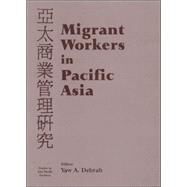- ISBN: 9780714653679 | 0714653675
- Cover: Hardcover
- Copyright: 10/30/2002
Although international labour migration from and within Asia is not a new phenomenon, it has received much media coverage since the 1997 Asian financial crisis. As businesses collapsed and unemployment figures started to rise, many low-paid migrant workers in labour-receiving countries in East Asia found their services no longer needed. As low-paid legal and illegal migrant workers became surplus to requirements they were threatened with expulsion/repatriation at a time when jobs were scarce in many of the labour-exporting countries. On the part of the host countries, there was some concern as to what to do with the redundant migrant workers who do the difficult, dirty and dangerous jobs that the local workers shun. These countries were in a dilemma as to whether to deport these migrant workers or to allow them to stay on in anticipation of economic recovery. The ensuing problems brought home to these countries that although their labour migration policies are built on the concept of temporariness, inreality it might be difficult if not impossible to avoid the use of migrant workers in the short term, if not the long term. The migration of workers to the high growth countries in Pacific Asia in the 1980s was a new phenomenon in these countries. As such the host governments did not have in place adequate housing, social security and legal protection, but the tight controls following the financial crisis have pushed these issues to the back burner. This volume discusses the debates and controversies surrounding this issue in Malaysia, Taiwan, SIngapore, South Korea, Japan and China.






